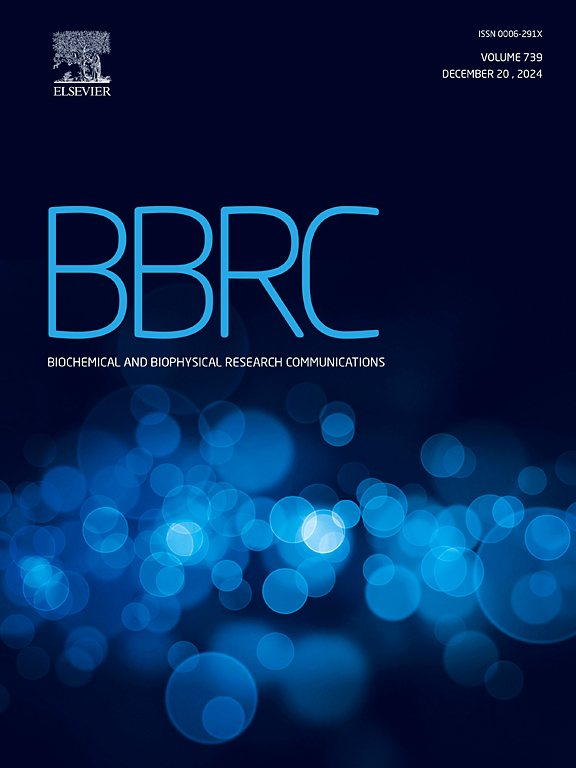RAB18 deficiency disrupts lipid metabolism and autophagy in mice
IF 2.5
3区 生物学
Q3 BIOCHEMISTRY & MOLECULAR BIOLOGY
Biochemical and biophysical research communications
Pub Date : 2025-03-20
DOI:10.1016/j.bbrc.2025.151673
引用次数: 0
Abstract
Mutation of the small G protein member RAB18 can lead to Warburg Micro Syndrome, characterized clinically by visual impairment and hind limb weakness. However, the cellular and molecular functions of RAB18 in mice are not fully understood. We obtained 3 Rab18+/+ and 3 Rab18−/− mice by using CRISPR/Cas9 technology. Rab18−/− mice exhibit symptoms of ocular shrinkage and hind limb weakness, along with griping/curling when tail suspended. Through metabolomics analysis, we found that Rab18 knockout affects lipid, vitamin, and amino acid metabolism while also impacting the autophagy signaling pathway. Lipid analysis of the mouse liver revealed that Rab18 knockout led to an increase in hepatic lipid droplets, promoted elevated TC and TG levels, and impaired fatty acid release. Interestingly, Rab18 knockout promoted the expression of lipogenic genes and proteins but did not affect the expression of lipolytic genes and proteins. Since lipophagy, involved in lipid droplet breakdown, plays a key role, we found that Rab18 knockout inhibited the expression of liver autophagy-related genes and proteins. In summary, our results suggest that Rab18 plays a role in autophagy in mice, likely contributing to mechanisms of lipid accumulation.
求助全文
约1分钟内获得全文
求助全文
来源期刊
CiteScore
6.10
自引率
0.00%
发文量
1400
审稿时长
14 days
期刊介绍:
Biochemical and Biophysical Research Communications is the premier international journal devoted to the very rapid dissemination of timely and significant experimental results in diverse fields of biological research. The development of the "Breakthroughs and Views" section brings the minireview format to the journal, and issues often contain collections of special interest manuscripts. BBRC is published weekly (52 issues/year).Research Areas now include: Biochemistry; biophysics; cell biology; developmental biology; immunology
; molecular biology; neurobiology; plant biology and proteomics

 求助内容:
求助内容: 应助结果提醒方式:
应助结果提醒方式:


